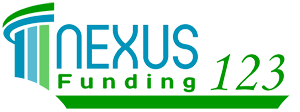7-MINUTE READ
For many, owning a home is part of the American dream. For most homeowners in America, getting a mortgage is just one of the steps it takes to get there.
If you’re contemplating homeownership and wondering how to get started, you’ve come to the right place. Here, we’ll cover all the mortgage basics, including loan types, mortgage lingo, the home buying process, and more.
First Things First: What’s A Mortgage?
First, what does the word “mortgage” even mean? A mortgage is simply a loan you use to buy a house. Mortgages are how most Americans buy homes, and they’ve been around since the 1930s.
When you get a mortgage, you agree to pay the lender interest in exchange for lending you the money. The amount the lender can give you varies depending on your income, how much money you have saved, and your credit history, which is a record of how well you’ve repaid your debts in the past.
Who Gets A Mortgage?
Most people who buy a home do so with a mortgage. A mortgage is a necessity if you can’t pay the full cost of a home out of pocket.
There are even some cases where it makes sense to have a mortgage on your home even though you have the money to pay it off. For example, investors sometimes mortgage properties to free up funds for other investments.
Different Types Of Mortgages
Not all mortgages are the same. There are different types of rates, different loan terms, and different loan products. Let’s take a look.
Rate Types
When you’re choosing your loan, you’ll need to figure out whether you want a fixed rate or an adjustable rate.
Most buyers opt for a fixed rate, which is simply an interest rate that doesn’t change over the life of the loan. If your interest rate is 4.5% when you close, then you’ll keep that 4.5% interest rate for the life of your loan. This means the principal and interest portion of your monthly payment won’t change. The fixed interest rate ensures your payment remains relatively stable until the loan is paid off.
Adjustable rates, on the other hand, are rates that change over the life of the loan. In most cases, your adjustable-rate mortgage (ARM) will have an initial fixed-rate period in which the rate won’t change. But once that fixed-rate period is up, your interest rate will adjust up or down, usually once per year, depending on the market. This means your payment will change as your interest rate changes.
ARMs might seem like a risky option, but they actually make a lot of sense for homeowners in certain situations. Interest rates for ARMs are generally lower, so if you know you won’t stay in the home for longer than the fixed-rate period, ARMs can be a great way to save on interest.
Terms
The phrase “loan term” refers to the period of time over which you’ll pay back the loan. In most cases, you’ll be able to choose the loan term.
The most popular loan term is 30 years. A longer loan term means a lower payment, since the payments are spread out over time, so a 30-year mortgage will usually give you the most affordable mortgage payment.
Another popular choice is a 15-year term. While your payment might be higher with a 15-year term, you’ll usually be able to save a lot of money on interest. Interest rates for 15-year loans are usually lower, and since you’re not making as many payments, you save on interest that way too.
Loan Products
There are many different types of loan products, and each has different benefits and requirements.
Conventional loans are a popular choice. A conventional loan is one that’s not backed by the government. Conventional loans can have a fixed or adjustable rate. In some cases, you can even qualify for a conventional loan with as little as 3% down. However, conventional loans have stricter credit requirements than some other loan types.
Many other loan types are backed by the government. The government backing usually means easier qualifications.
A popular government-backed loan is an FHA loan. This is a loan that’s backed by the Federal Housing Administration. Many people choose FHA loans because they have lower credit requirements and offer the ability to get a loan with as little as 3.5% down.
The downside of an FHA loan is that you’ll have to pay mortgage insurance. There’s an upfront mortgage insurance premium you’ll have to pay when you get the loan, as well as mortgage insurance costs that you’ll have to pay for either 11 years or the life of your loan, depending on the size of your down payment.
There are other loan products that are backed by the government that are specific to certain types of buyers. VA loans, for example, are only available to active-duty service members, veterans, and the surviving spouses of veterans. VA loans don’t require a down payment or mortgage insurance.
USDA loans are another example of a government-backed loan. USDA loans can only be used to purchase homes in qualifying rural areas, however, and are subject to income limits.
